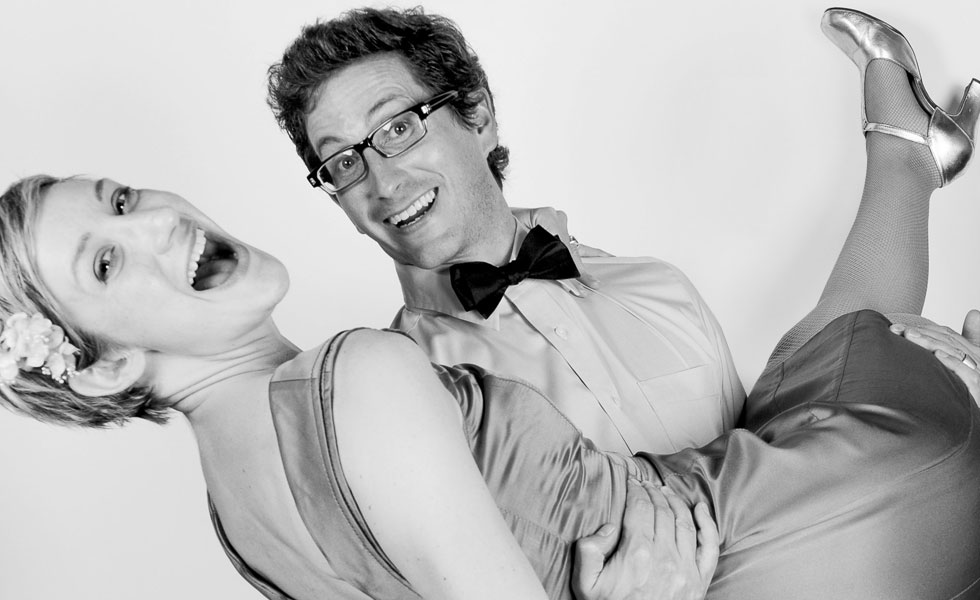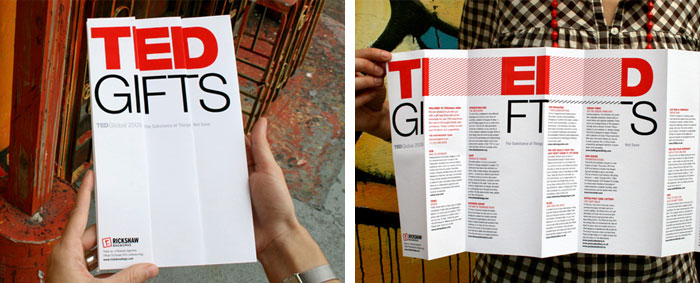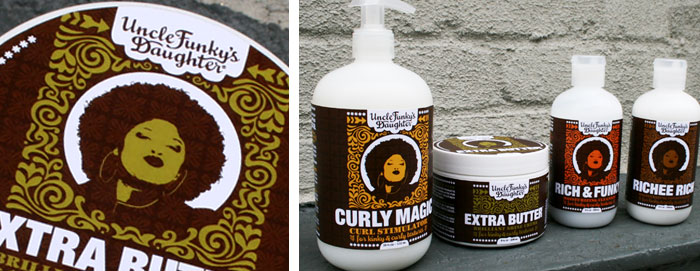Design love: WORKSHOP
Comments: +
July 21 2010

WORKSHOP is a Brooklyn-based design studio that knows a thing or two about love.
Aiming to better the world through socially responsible design, WORKSHOP was founded in 2005 by three friends: husband-and-wife couple Creighton Mershon and Jessi Arrington, and their best friend Josh Stewart. Working with clients like TED Conferences and the New York Philharmonic, the trio make time for fun—whether it’s their annual Kentucky Derby Party or an all-rainbow birthday.
As part of our Design Love series, we talked with Jessi and Creighton to find out what it’s like going to work with your best friends.
IDSGN: How did the two of you meet?
CREIGHTON: We met through Jessi’s boss at the time.
JESSI: My boss and still current design mentor, Michelle Cassuto, was Creighton’s teacher at Parsons. He was in her typography class. I was working for Michelle, and he came by her office one day. He literally knocked on the door, I opened the door, and my life changed. It was weird. [Laughs]
He stayed at the office long enough to look at all her vacation photos, which was kind of suspect. I think he was just kind of hanging around. I don’t know, he’s very polite. So maybe he just really did want to see Michelle’s vacation photos.
CREIGHTON: ...I was hanging around. [Laughs]
What made you want to start working together?
CREIGHTON: When we first met, Jessi was a design professional and I was still a student. A lot of it started with my projects. I would be doing school work and Jessi would be great about critiquing before my full class critique. I learned so much about design from Jessi, though she never made me feel inferior. We have always had great respect for each other’s work and unique skills.
At the same time I had several freelance projects I was doing on the side. Jessi started helping me, and we would share those projects.
JESSI: In some ways it was just a matter of ‘This project needs to get done. I’m not doing anything right now, but Creighton is sitting over there working. That’s no fun. So let’s work on it together. That’s more fun.’ We just liked spending all of our time together.
Then we pulled our good friend Josh into the fray, and the three of us actually ended up sharing an apartment together, which is when WORKSHOP began. As more, and larger freelance projects started coming along we had to decide if we were going to make a commitment and take it to the next level by starting a business, or if we needed start saying no to these projects.

What would you say are the best and worst parts of living and working together?
JESSI: Maybe you should answer, and then I should answer. I don’t know if we really have a consensus on this. [Laughs]
CREIGHTON: Freakishly, Jessi and I really enjoy being together. Being able to work at the same place means less time apart.
JESSI: What do you think the worst part is?
CREIGHTON: The worst part, the hard part, is being able to turn it off. We are a family, so it’s important to have personal time. A lot of times it’s ‘what are your goals today?’, ‘what projects do we need to be thinking about?’ Being together allows us to help each other finish projects that have crazy deadlines. It’s nice when you do have to stay up late that you have a teammate. But, you have to really be conscious about turning it off in order to focus on each other personally.
JESSI: Yeah, I would say the worst part is that we are not disciplined enough about having separate time. There is no division in our life right now between our work life and our personal life. Because we take business so personally, the business in some ways defines our relationship. So, we’re taking steps to try to have some other things for ourselves.
But the good outweighs the bad. You are tricking yourself that you’re not even going to work because you get to go with your best friend. Josh is also our best friend so coming here to this studio with all these friends doesn’t feel like a real job. That’s kind of our goal, to not have a job that bums us out. Being happy makes our work better. It also makes the studio a fun place.
You are tricking yourself that you’re not even going to work because you get to go with your best friend.
Then there is something to be said about showing up at a meeting with your partner and watching that person in action, in front of a client and being like, ‘Damn, this guy is really smart.’ If I didn’t work with Creighton, I might not see that side of him.
People are really on their game when they’re at work, and then when they get home they’re turned off a bit. So I get to see him when he is at his most dynamic, and that’s really exciting.

So is it a struggle to balance personal time and studio time?
CREIGHTON: That’s our challenge. But, I do think we get a lot from our professional lives that adds meaning and purpose to our personal lives. That helps make up for it a bit.
JESSI: We have to work on that. The very first thing we said to each other this morning had to do with work, like ‘how did that meeting yesterday go?’ We don’t notice it being a bad thing, so maybe it’s not.
How long have you been married, and how long have you been designing together?
JESSI: I’d say we’ve been designing together since we met, which was May of 2002. We got married in September of 2006. It’s almost four years of marriage, so we’ve been designing twice as long as we’ve been married.
How do you manage disagreements in the workplace?
JESSI: We have a very special dynamic. Josh, Creighton and I are three best friends. So if there is going to be a disagreement, we have an odd number, and we are able to weigh it.
CREIGHTON: Ultimately the success of our business and the success of our relationships within WORKSHOP are the most important things to us. I believe that understanding is always near the surface when disagreements come about.
JESSI: At the base level of our relationship is respect. If you have a tremendous amount of respect for somebody, you respect their opinion. So it never gets to a point, I don’t think, where it’s ‘I’m totally right’ or ‘You’re totally wrong.’
If you have a tremendous amount of respect for somebody, you respect their opinion. So it never gets to a point…where it’s ‘I’m totally right’ or ‘You’re totally wrong.’
Do you think some couples just aren’t up it?
CREIGHTON: I don’t think it works for everyone. I had a teacher at Parsons who said in the very first class, ‘Never work with your spouse.’ Stylistic differences, or not being able to share the stage could make it difficult.
JESSI: I attribute our being able to work together to Creighton. He’s one of the most kind and charming people that you’ll ever meet, and he has no ego. Everyone loves being around him. I have a really, really strong personality and the fact that he can take that, and embrace it, and almost help me elevate that to the next level is really special about him. So I think if you have two really, really strong personalities that are always at odds with each other that wouldn’t work. We have a real give-and-take. I would not advocate it by any means. I’ve tried to imagine why it works for us, and I don’t have an answer for that. It’s just something very unique about our personalities.

Did you ever think that you would marry another designer?
CREIGHTON: No. I didn’t even know that I wanted to be a designer for a majority of my life. So it’s not like I was 12 and saying, ‘Oh, I want to marry a designer when I grow up.’ [Laughs]
JESSI: I once had a psychic read my palm and tell me that my professional life and personal life would dovetail. That was just for fun, but when she said it I was dating someone who was not in anyway related to design. So that made me think: maybe it would be cool to have conversations about this thing that I’m the most passionate about in my life with the person I’m most passionate about. That way I can have a design conversation without having to give a whole primer on what I’m talking about.
Could you be married to a bad designer, or a designer that didn’t challenge you?
CREIGHTON: I don’t think so.
JESSI: No. Next question. [Laughs]
Lastly, do you have any advice for couples thinking about working together?
JESSI: I always try to put out the disclaimer that our relationship-even relationships in general-aren’t for everyone. I don’t know why ours works. I just know that it does and it’s amazing. I wouldn’t want to deny anyone the potential opportunity to have what we have, but I also wouldn’t want to send anyone down the wrong path.
CREIGHTON: I would say what worked for us-or we got lucky with-is that we had some test cases. We had several projects that we worked on and proved successful before we took the leap. If couples have the opportunity to team up on projects after hours, see how it works. See what the results are and that you aren’t biting each other’s heads off-that would be a good test.
JESSI: That’s really smart, that’s smart advice. That’s why I like him. [Laughs]
I think they would have to make sure, like we were saying before, that they do have complimentary skill sets and they are not going to try to be in the same role. That’s one thing that has taken us five years to get to: defining what our roles are within the business. The more people have their own areas of expertise, the less butting of heads there is. It’s like, ‘This is your area. I trust you to make decisions in this area. You are going to trust me to make decisions in my area. That is going to make us successful.’ So sitting down and thinking about what your separate roles would be, would probably be a good place to start.
Also see:
- Design love
- Design love: Triboro Design
- Design love: Design Army
- Design love: SML Office
- Design love: Vignelli Associates
Filed under: design
Comments